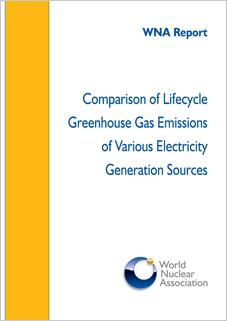Comparison of Lifecycle Greenhouse Gas Emissions of Various Electricity Generation Sources
The emission of greenhouse gases (GHGs) and their implications to climate change have sparked global interest in understanding the relative contribution of the electrical generation industry. According to the Intergovernmental Panel on Climate Change (IPCC), the world emits approximately 27 gigatonnes of CO2e from multiple sources, with electrical production emitting 10 gigatonnes, or approximately 37% of global emissions. In addition, electricity demand is expected to increase by 43% over the next 20 years.
This substantial increase will require the construction of many new power generating facilities and offers the opportunity to construct these new facilities in a way to limit GHG emissions. There are many different electrical generation methods, each having advantages and disadvantages with respect to operational cost, environmental impact, and other factors. In relation to GHG emissions, each generation method produces GHGs in varying quantities through construction, operation (including fuel
supply activities), and decommissioning. Some generation methods such as coal fired power plants release the majority of GHGs during operation. Others, such as wind power and nuclear power, release the majority of emissions during construction and decommissioning. Accounting for emissions from all phases of the project (construction, operation, and decommissioning) is called a lifecycle approach. Normalizing the lifecycle emissions with electrical generation allows for a fair comparison of the different generation methods on a per gigawatt-hour basis. The lower the value, the less GHG emissions are emitted.
The objective of this report is to provide a comparison of the lifecycle GHG emissions of different electricity generation facilities.
